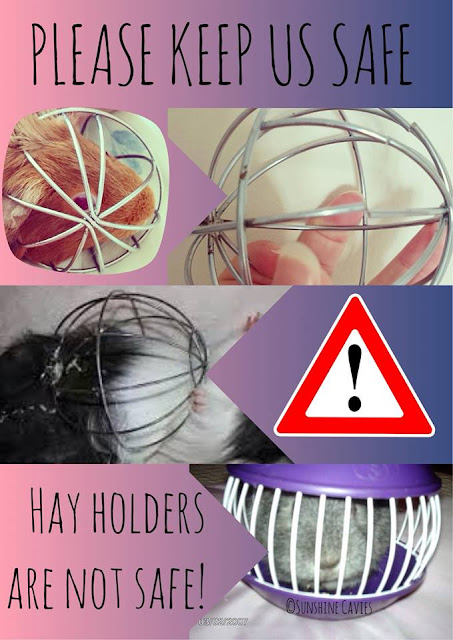Fleece Vs. Bedding for Guinea Pigs
The most common question with Guinea Pigs is "What bedding is the best?" when it comes to guinea pigs and other small pets we all want what's best for them. And when you think about bedding for them, you want the safest and healthiest bedding for their well being and overall health. There are some bedding which are toxic to their lungs and liver.

Fleece: Fleece bedding has became the most popular bedding for our guinea pigs. Why? Fleece is safe to use, it's comfortable for them, and it saves money. But fleece is not for everyone. Fleece can be hard work, because you have to keep up with it daily. Not all fleece is the same, the fleece to use must be 100% polyester.
But there are two different types of fleece.
But there are two different types of fleece.
Anti Pill fleece is the best to use with Guinea Pigs.
Blizzard Fleece can be used but it may trap the hay and hair within the fleece. (Which believe me you don't want to experience that mess) :0
Blizzard Fleece can be used but it may trap the hay and hair within the fleece. (Which believe me you don't want to experience that mess) :0
The purpose for fleece is to keep our pigs dry while their urine seeps through the bottom absorbant layer, leaving the top layer (fleece) dry.
How do you prepare it?
When you first get brand new fleece it needs to be wick before use. What does 'wick' mean? Wicking means you are removing all chemicals that may be in the fleece and making sure liquid pulls through the fleece, rather staying on top. The urine should pull through, leaving the top dry and is absorbed by the under, absorbent layer.
How do you wick?

To wick is to wash the fleece multiple times on HOT until liquid seeps through. White vinegar can help with the process. If liquid stays on top, leaving a puddle (pictured left) you will need to wash again. How do you know it's wick? When I wick fleece, with each wash cycle I like to pore a small amount of water on it to see if it seeps through or stays in that same spot, ontop. If it stays ontop I continue the washing process until the liquid seeps through the fleece. when it does seep through, I can now put the fleece in the dryer and use it. If when you use the fleece with your piggies and you see signs that it is not wick enough, you will again need to do the wicking proccess again.
Do not use fabric softner or dryer balls with fleece!
Here are a few signs if it did not work:
- The top of fleece is wetter than the absorbant layer.
- Guinea Pigs feet feel cold and wet.
- Under sides (belly) damp when you pick the pigs up.
- Poo droppings as well hay get wet and soggy which could be dragged across the cage, this can leave stains.
What Absorbant Layer To Use?
There are many materials to use for the bottom absorbant layer. If you play around with it you will find which material works best for odor control. With my cage (a Midwest Guinea Habitat) I use one layer of towel, with puppy pads ontop, then the fleece folded in half. With the number of pigs you have, depends on the layers you would need. Here are a couple materials you could use.
- Towels
- Puppy Pads
- U-hual furniture Pads (made from recyled denim, not the heavy blankets)
- Mattress Protectors
- Mattress Protectors
- Zorb Fabric
- Newspaper
- Terry Cloth
- Incontinence Pads
If your Cavies begin to burrow under the fleece, you can binder clip the fleece to the coroplast (used with c&c cages), clip to the cage bars, put small clean bricks in each corner of the cage, or use Fleece Liners.
Fleece Liners are fleece that has been sewn with absorbant layers between two fleece layers. Many Etsy shops sell liners.
Always remember to keep fleece clean by spot cleaning daily, removing all debris and old soiled hay. You can spot clean using a dust pan and broom, or hand held vacuum. It's recommended to change fleece bedding every 3-4 days.
Regular Bedding
- Aspen Shavings- When people look for shavings, Aspen is the most recommened bedding to use. There are no harmful oils in Aspen. Aspen does have a higher cost than pine.
- Kiln Dried Pine Shavings- Although Regular Pine is harmful, Pine that has been through a drying process is safer to use. It removes any harmful phenol oils that may affect the lungs and liver.
- Paper- Paper bedding such as CareFresh is popular with bedding, is soft and absorbent, but is high in cost. Carefresh added baking soda to their formulas in 2015, they supposedly removed baking soda out. Baking Soda is TOXIC to all small pets. Oxbow and Small Pet Select also has Paper Bedding.
- Pellets- Bedding made in pellet form may have great odor control, and is low cost. This bedding can be mixed with other bedding such as shavings, paper bedding, or under fleece. Make sure the pellets are 100% wood, or paper based like Yesterday's News Uncented (does not contain baking soda)
Bedding to Avoid:
- Cedar Shavings - Cedar is very toxic to our small companions, it affects the liver and lungs due to the phenol oils. Cedar, aswell Regular Pine causes URI (upper respiratory infections).
- Regular Pine Shavings - As with Cedar, Regular pine that did not go through a drying process is toxic. It has the same phenol oils.



You have done good work by publishing this article here.Luxury bedding sets uk I found this article too much informative, and also it is beneficial to enhance our knowledge. Grateful to you for sharing an article like this.
ReplyDelete